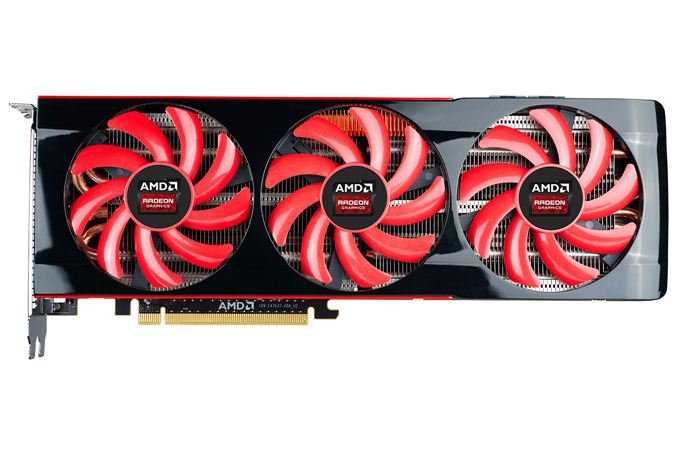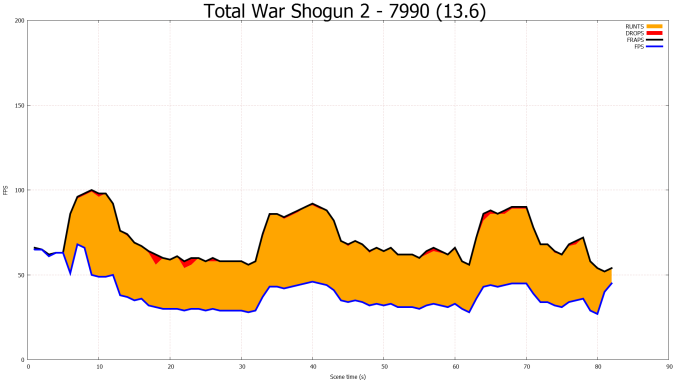AMD Frame Pacing Explored: Catalyst 13.8 Brings Consistency to Crossfire
by Ryan Smith on August 1, 2013 2:00 PM EST
In an off year that hasn’t seen too many new product releases thus far, this has been anything but a dull time. For the better part of a year now the technology journalist community – spearheaded by The Tech Report’s Scott Wasson – has been investigating the matter of frame pacing and frame timing on GPUs. In applying new techniques and new levels of rigor, Scott found that frames were not being rendered as consistently as we had always assumed they were, and that cards that were equal in performance as measured by frame rates were not necessarily equal in in performance as measured by frame intervals. It was AMD in particular who was battered by all of this work, with the discovery that both their single-GPU and multi-GPU products were experiencing poor frame pacing at times. AMD could meet (and beat) NVIDIA on frame rates, only to lose out on smoothness as a result of poor frame pacing.
Since then we have seen both some progress and some new revelations on these matters. AMD was very quick to start working on resolving their single-GPU issues, and by March when they were willing and able to fully engage the tech community, they had already solved the bulk of those single-GPU issues. With those issues behind them, they also laid out a plan to tackle the more complex issue of multi-GPU frame pacing, which would involve spending a few months to write a new frame pacing mechanism for their cards.
At the same time NVIDIA also dropped a small bombshell with the public release of FCAT, their long in development frame interval benchmarking tool. FCAT could do what FRAPS alone could not, capturing and analyzing the very output of video cards to determine frame rates, frame times, and frame intervals. Though FRAPS was generally sufficient to find and diagnose single-GPU issues, FCAT shed new light onto AMD’s multi-GPU issues, painting a far more accurate – and unfortunately for AMD more dire picture of Crossfire frame pacing.
Perhaps as proof that there’s no such thing as coincidence, since then we have seen the release of AMD’s latest multi-GPU monster, the Radeon HD 7990. Packing a pair of high clocked Tahiti GPUs, the 7990 was AMD’s traditional entry into the realm of $1000 multi-GPU super cards. A capable card on paper, the 7990 has been at the mercy of AMD’s drivers and lack of a frame pacing mechanism, with the previous revelations and FCAT results causing the 7990 to suffer what can only be described as a rough launch.
Ultimately when AMD engaged the community back in March they had a clear plan for addressing their multi-GPU frame pacing issues, developing a new frame pacing mechanism for their cards. AMD stated outright that this work would take a few months, something of an arduous wait for existing Crossfire users, setting a goal that the new frame pacing mechanism would “come in or around a July driver drop.” July has since come and gone by a day, but at long last AMD has completed their initial work on their new frame pacing mechanism and is releasing the first public driver today at 2pm ET as Catalyst 13.8 Beta 1.
As part of today’s launch activities, AMD seeded the beta driver to the press a week in advance to give us a chance to put it through the necessary paces, give AMD feedback, and write up about our experiences with the new driver. Over the next several pages we’ll be going over what changes AMD has made to their drivers, how they impact the 6 games we do frame interval testing with, and ultimately whether AMD has made sufficient progress in resolving their frame pacing issues. Make no mistake: AMD wants to get past these frame pacing issues as quickly as possible and remove the cloud of doubt that has surrounded the 7990 since its launch, making this driver launch an extremely important event for the company.











102 Comments
View All Comments
boot318 - Thursday, August 1, 2013 - link
I've read a couple people got "black screened" when they did this update on one GPU. I'm not saying that will happen, but you better prepare for it if you do.Bob Todd - Thursday, August 1, 2013 - link
I may have missed this when I skimmed through the results, but have you heard anything about rough estimates from AMD about a frame pacing release supporting Eyefinity (e.g. Q4, H1 2014, etc.)? I know it's still a tiny percentage of users, but there are relatively cheap 1080p IPS panels now so building a nice looking 5760x1080 setup is pretty affordable these days. After playing games this way, it's something I wish I had done earlier, and I'm eager to see a frame pacing driver supporting this setup.Ryan Smith - Thursday, August 1, 2013 - link
Sorry, AMD didn't give us an ETA on that one. Let me see if I can still get one out of them.DanNeely - Thursday, August 1, 2013 - link
HardOCP says DX9 and Eyefinity support should be available in a driver update later this month.http://www.hardocp.com/article/2013/08/01/amd_cata...
DeviousOrange - Thursday, August 1, 2013 - link
I am hoping this will also improve Dual Graphics, will give it a test over the weekend.Homeles - Thursday, August 1, 2013 - link
Well I'll be damned. They did it. Not quite as good as Nvidia, but at this point, the difference isn't really one worth mentioning.xdrol - Thursday, August 1, 2013 - link
The link is bad for the driver, please remove "-auth" from the URL.chizow - Thursday, August 1, 2013 - link
Like watching a baby crawl. Good first step for AMD, but still a long way to go.AMD and their fans can thank the press (mainly TechReport and HardOCP, sorry Derek, you guys were way late to the party and still not fully onboard with FCAT measurements) and Nvidia fans for making such a big stink of this. Lord knows AMD and their fans were too busy looking the other way to address it, anyways.
Hopefully AMD and their fans take something away from this: if you want to improve your product, don't try to sweep it under the rug, address it, own it, and demand a fix for it.
chizow - Thursday, August 1, 2013 - link
Sorry my above post should reference the author Ryan, not Derek (was thinking of your predecessor), when referring to AT not being at the forefront of this runtframe/microstutter issue.Also, I feel the accolades given to TechReport, while not completely undeserving, should also be given to PCPer's Ryan Shrout and some of the German publications like PCGamesHardware. While TechReport did start the ball rolling with some new ways to measure frame latency/microstutter, Ryan Shrout really harped on the runtframe issue until Nvidia worked with him in unveiling FCAT. Also, the German sites have been hammering AMD for years about their much worst microstuttering in CF, largely ignored by the NA press/blogs. And finally Kyle at HardOCP has said for years SLI felt smoother than CF with some Pepsi challenge type user testing, but not so much hard evidence as presented here as well as other sites.
Finally Ryan, are these new metrics you've done an excellent job of formulating going to make it into future benchmarks? Or are you going to just assume the issue has been fixed going forward? I would love to take AMD's word on it but as we've seen from both vendors in the past, driver regression is commonplace unless constantly revisited by users, reviewers, and the vendors alike.
Ryan Smith - Friday, August 2, 2013 - link
"Finally Ryan, are these new metrics you've done an excellent job of formulating going to make it into future benchmarks?"They'll be in future articles in a limited form, similar to how we handled the GTX 780 launch. It takes a lot of additional work to put this data together, which isn't always time we have available. Especially if it becomes doing hours of extra work to collect data just to say "yep, still no stuttering."